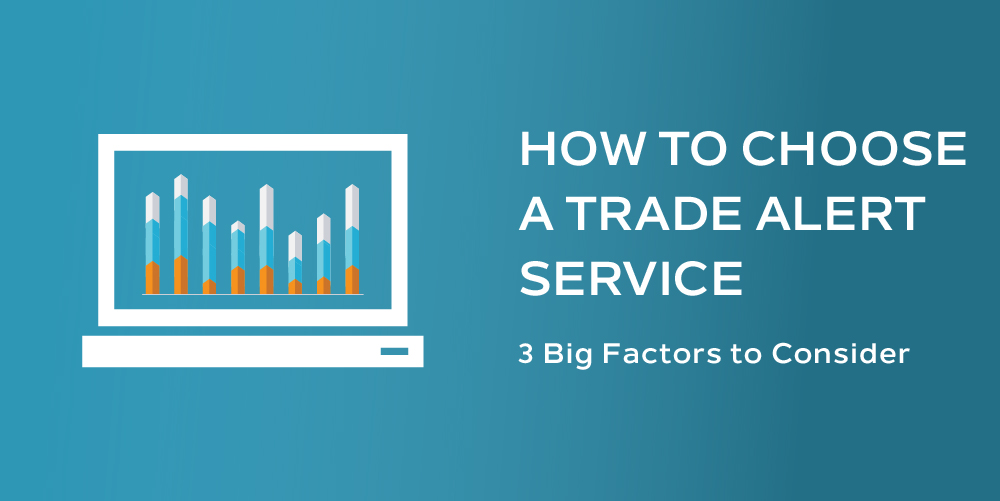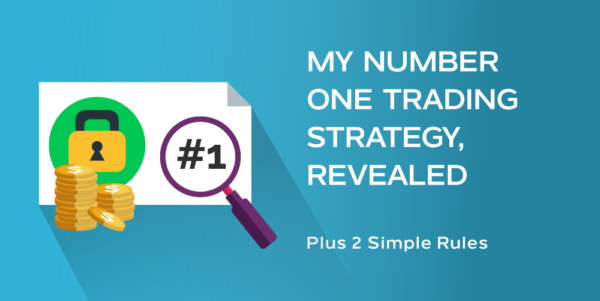
If you are like many investors and traders, the reason you’re looking for a trade alert service is because you don’t have enough time to do the research and analysis required to find the right trades.
Or perhaps you’re looking at trade alert services because you’re not confident in your own abilities and are looking for a guide and mentor.
Maybe you enjoy trading and believe there’s money to be made in trading, but you don’t have the experience, the ability, or even the time to place, watch, and research trades – let alone be successful at it day in and day out.
Trade alert services have the potential to take your trading to a level of profitability you may have previously written off due to a lack of time and experience.
What types of trade alert services are available?
Frankly, there are a lot of options when it comes to trade alert services. Some people go to Twitter or StockTwits and find a guru. If this trader tweets to buy a stock or to short an option, their followers do so. I think this is probably very dangerous, extremely speculative, and I cannot recommend following this method.
Other people subscribe to day trading alerts. Day trading alerts can be sent to you via text message or as a notification right inside of your trading platform on your trading screen. A day trade requires you to get into the trade immediately or you’re going to miss it. You are likely only holding the position for a few hours, or in rare cases, you may hold it overnight.
The trade service that I recommend is a swing trade service. So what’s the difference between a swing trade and a day trading alert service?
- Swing trade services often include periods of time spent monitoring a trade or getting ready to place a trade that’s on the radar. I’m not talking about an order to buy or short a particular stock, but a time of observation. Like many investors, you may want to do just a little bit of research on your own in addition to what the trade alert service recommends.
- You don’t necessarily need to be in front of your computer or have your phone on you at all times in order to jump on a trade alert right away. You are able to see trades coming with swing trading watchlists and their accompanying observation times.
- While a swing trade can occasionally hold on to a position for just a day, typically it holds on to a position for a few days, weeks or even months, depending on the types of trade signals the lead trader is looking for.
The big difference between day trades and swing trades is how long a position is held and the length of watch period in which you’ll be alerted that there’s an opportunity coming.
How do you start to evaluate a trade alert service?
First, I would look at how the recommended trades are actually being generated (i.e. what type of research is being conducted) and what types of stocks are being recommended.
If the types of recommended stock are unfamiliar to you or are not the type of stock that you typically follow, then that trade alert service may not be for you.
If you don’t have a good understanding of the technical analysis, the algorithm, or the types of fundamental analysis that the stock picker is using to find their trade alerts, then again, that service may not be for you.
Now that you know what types of stocks are recommended and how they’re researched, you’ll want to look into their track record and your level of risk tolerance.
Does their track record complement your risk tolerance?
Your next consideration should be the trade alert service’s track record. There’s a big myth when it comes to trade alert services that they’re going to be right all of the time. That’s just simply not the case.
I have to take the time right now to mentally prepare you for losses and losing trades. That’s totally normal. No one is going to be 100% right on every trade. If a lead trader says that they’ve been 100% correct, then you should probably use some common sense and avoid them because you know that that can’t possibly be true.
We have to first of all understand that we’re going to lose some money when trading and that any trade alert service is going to have some losing trades. If you’re not comfortable with losing money, then you shouldn’t be investing at all. You should find something else to do with your capital.
If you are okay with risk, how much risk are you truly capable of? This is a critical factor to look at when it comes to selecting a trade alert service. Do they have a track record? If they have a track record, what types of swings in profit and loss have they had while they’ve been trading? Have they had 10%, 20%, or even 40% drawdowns? Have they had 10%, 50%, or 100% gains in the account? The volatility of the trade alert service should be another piece of criteria in determining whether or not it’s the right service for you.
If the trade alert service has had a 10% or 20% drawdown and that’s something that scares you, but you really like the overall performance and how much money it’s made, you still should not invest or subscribe to that trade alert service.
Here’s why: It’s never hard to stick with a trade alert service when it’s making money. It’s hard to stick with the trade alert service when it’s losing money. If the risk is in a tolerance area that you’re comfortable with, then you’ll have a much better relationship with that trade alert service even with fluctuating profit levels.
How much risk is right for you?
I would highly recommend finding out your true risk tolerance and outlining your financial goals. Risk is important, but so are your goals for the account. How much are you trying to grow your investment portfolio over a one-year period of time? Are you trying to grow it by 5%, 50%, or even 200%?
If you have a high risk tolerance with a really big performance goal for your portfolio, well then you need to find a trade alert service that’s geared toward huge risks for huge rewards. But if you’re not trying to hit it out of the park, if you’re just trying to beat the S&P, or you’re trying to do 25% better than the S&P (which is still phenomenal) and you have a moderate to aggressive risk tolerance – then you’re better off finding a specific trade alert service that fits the risk tolerance and goals that you have set for yourself.
Does the trade alert service match your investment capabilities?
Last but not least, make sure that the trade alert service is appropriate for the amount of money you have to invest. If you have $5,000 or $10,000 to commit and you’re new to trading, then perhaps you should find a trade alert service that allows for smaller trades with that amount of money.
You would not want to subscribe to a trade alert service where you may need $100,000 or $200,000 to invest because the alerts are not going to be appropriate for your size of account and you may not be able to take all of the trades that the trade service is recommending. Make sure you investigate how much money they recommend to have in your account before you subscribe to that service.
These are all super important aspects to finding the right trade alert service for you.
If you don’t have the time or confidence, but you do have the right risk tolerance to trade and desire to invest, then a trade alert service may be just the answer. Just make sure to do your homework and choose the best one for your trading style, risk tolerance and level of capital.











